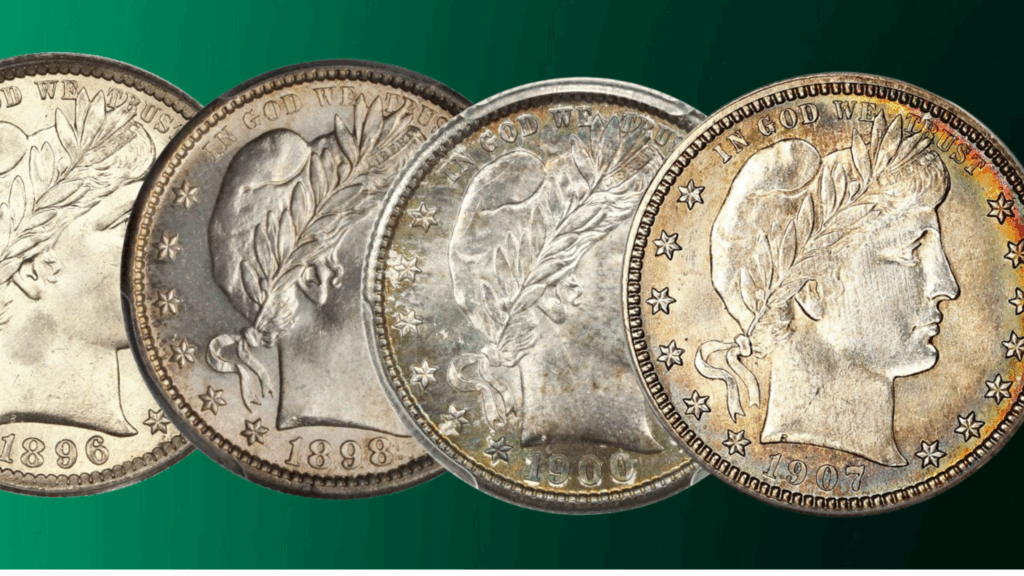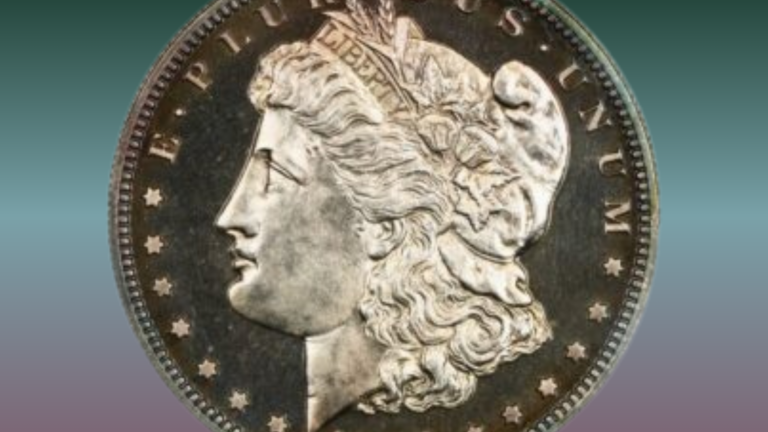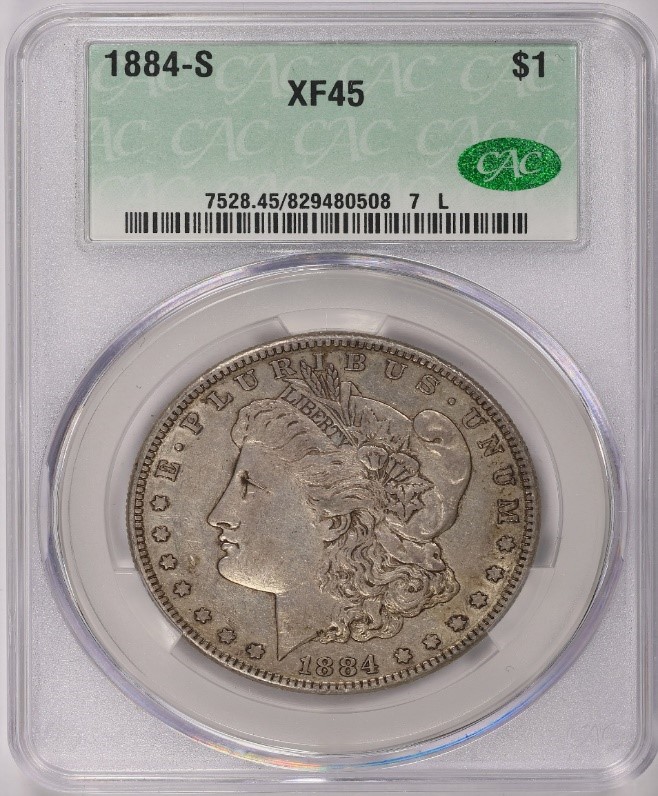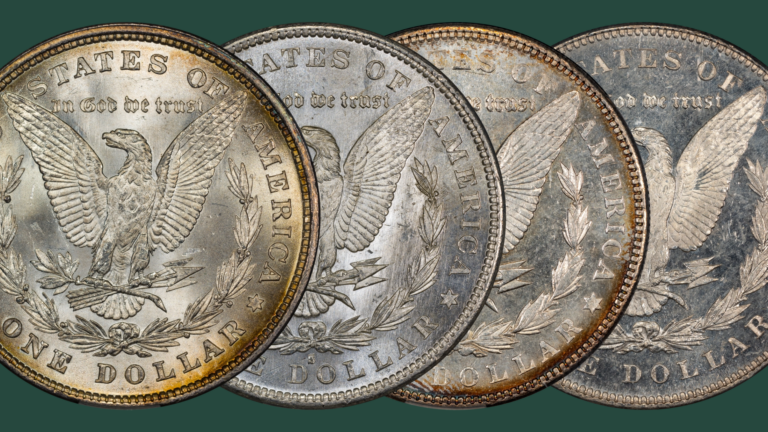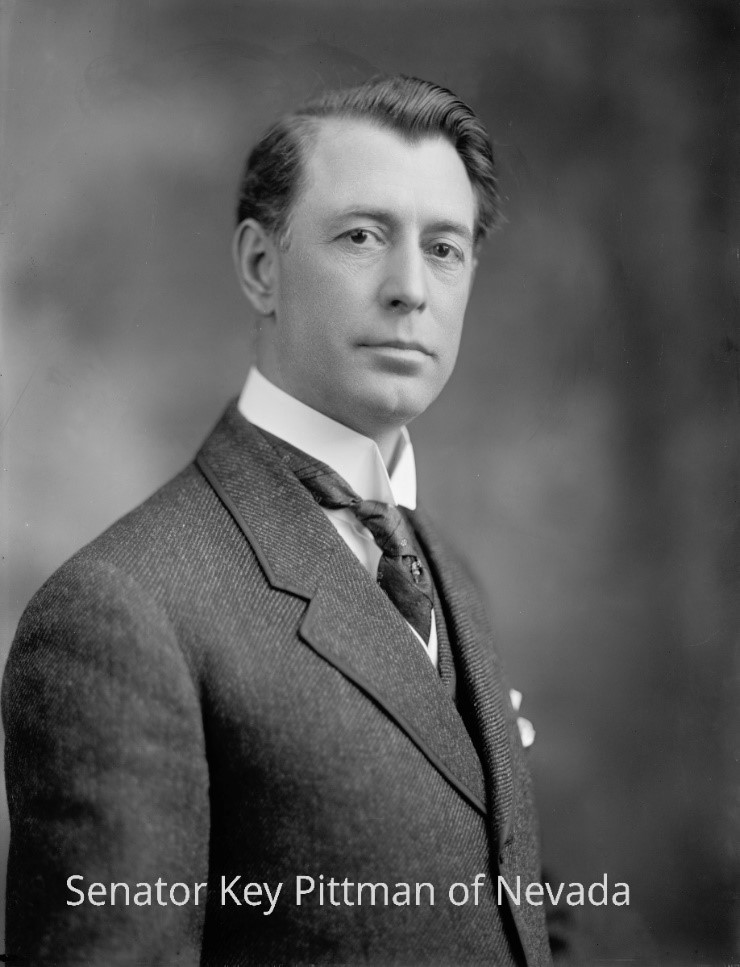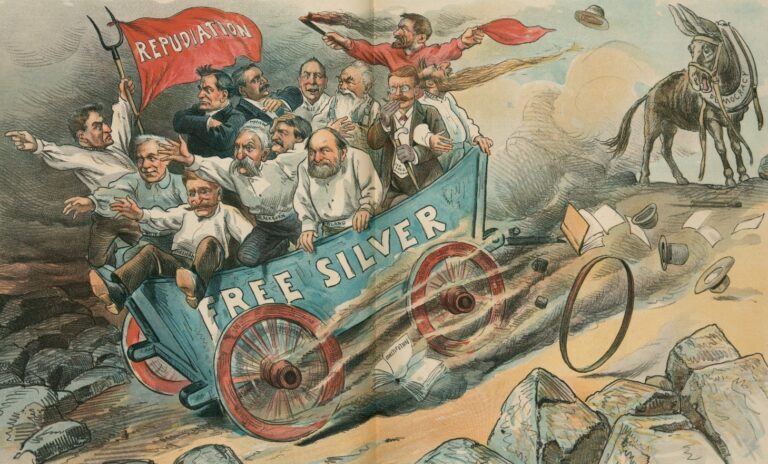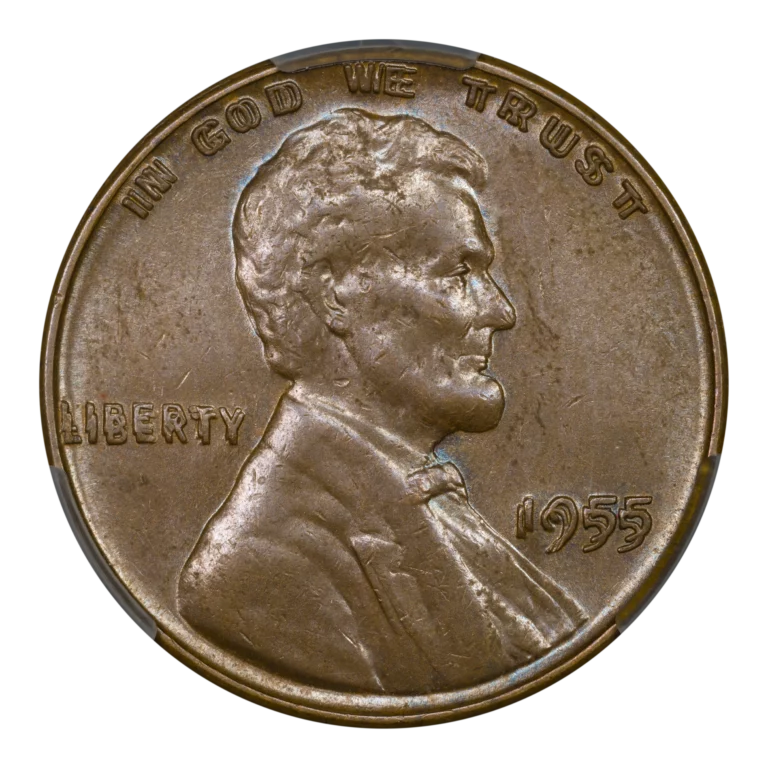by Greg Reynolds
Barber quarters were minted from 1892 to 1916. In an historical sense, those from the 1890s are more exciting, as they are reminiscent of amazing economic growth from the 1870s to the early 1890s, the gilded age of fine living, coinage issues at the center of political conflicts, the ‘Panic of 1893,’ and the emergence of the U.S. as a superpower during the Spanish-American War of 1898.
This discussion is about building a set of circulated Barber quarters, generally those grading from VF-20 to AU-55. For the keys and other expensive dates, some collectors may wish to save money by purchasing coins that grade below VF-20, of which there is a substantial number. Most Barber coins circulated for many years.
From the 1930s to the 1950s, coin collectors often pulled Barber quarters from change. By then, most had worn down to the point that they usually graded from AG-03 to Fine-12.
The vast majority of surviving Barber quarters grade below VF-25 or above AU-55. Original rolls of uncirculated Barber quarters were saved by coin dealers and by people saving silver coins in general, a common practice during much of the history of the United States.
Barber quarters that grade from VF-25 or AU-50 are fairly scarce. This is one reason why it is fun to pursue them and to build a set. Besides, these are much less expensive than Barber quarters that grade above MS-63.
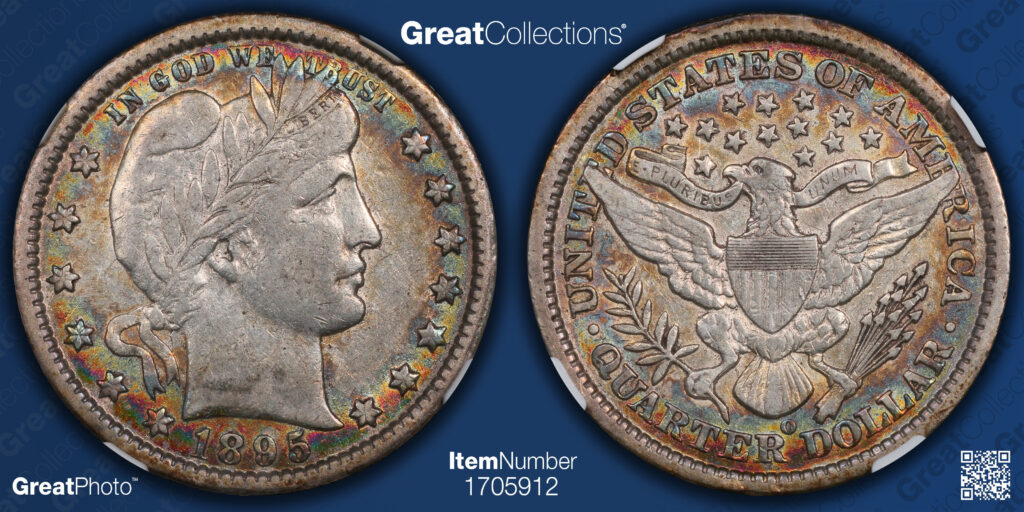
Collectors interested in Choice to Gem quality Barber quarters may wish to read my two recent articles on MS-64 to MS-65 grade Barber quarters. The first is on the least scarce dates and the second is on the most scarce dates, especially semi-keys.
Barber dimes, quarters and half dollars, plus Liberty Head nickels, were designed by Charles Barber. The designs of Barber quarters and Barber half dollars are extremely similar.
Charles Barber also designed both sides or just the obverse (head side) of numerous commemorative coins issued during the period from 1892 to 1915, including the 1893 Isabella quarter and the Lafayette silver dollar of 1900. He was the sole designer of the One Dollar gold commemorative coins of the 1903 to 1905 period, the Louisiana Purchase pieces of 1903 and the 1904-05 Lewis & Clark commemoratives.
Among many patterns, Barber designed the 1879-80 Flowing Hair Stella ($4 gold denomination). He designed medals as well.
According to R. W. Julian, in an article in Coins magazine that was republished on the Numismatic News website, Charles Barber’s father, William, was the Chief Engraver of the U.S. Mint. After William died in 1879, Charles was appointed to the post, and he held this position until he died in 1917.
Barber quarters were struck at the Philadelphia Mint every year for the duration of the design type. Before 1942, no official Philadelphia Mint coins had mintmarks. Except 1904, 1906, 1910, and 1916, Barber quarters were struck at the San Francisco Mint each year with an ‘S’ mintmark. With an ‘O’ mintmark, Barber quarters were struck at the New Orleans Mint from 1892 to 1909. From 1906 to 1916, except 1912, Barber quarters were struck in Denver with a ‘D’ mintmark. Why was 1912 an exception?
A collector who has yet to form a budget and unsure how to proceed could easily acquire a few Philadelphia Mint dates from the nineteenth century. As the first year of a new design, 1892 quarters tended to be saved by the general public. These are inexpensive, in the context of nineteenth century silver coins. On June 12, 2022, GreatCollections sold a CAC approved VF-25 1892 quarter for $87.75. On Sept. 22, 2024, GreatCollections sold a CAC approved AU-58 1892 quarter for $245.30.
The 1892-O is a somewhat ‘better date.’ Depending upon the grade and circumstances of transactions, it could be worth anywhere from 10% to 75% over an equivalent 1892.
On June 12, 2022, GreatCollections sold a CAC approved Fine-15 grade 1892-O for $128.43. On Aug. 13, 2023, GreatCollections sold a CAC approved AU-58 grade 1892-O for $381.70. Though not nearly a semi-key, the 1892-S is definitely a better date. In circulated grades, it is the highest-priced date of the years from 1892 to 1895. In grades from VF-20 to AU-55, CAC has approved or encapsulated just twelve 1892-S quarters, as of Dec. 11, 2024.

Show off Your Collection in the CAC Registry!
Have CAC coins of your own? If so, check out the CAC Registry–the free online platform to track your coin inventory, showcase your coins by building public sets, and compete with like-minded collectors!
Submit To CAC
A significant number of PCGS or NGC graded, circulated 1892-S quarters have never been sent to CAC. The 1893 has a low CAC population in circulated grades, too, not because it is scarce, rather because it is not cost effective for dealers to submit 1893 quarters that grade less than XF-40 to CAC. Some collectors have not yet thought much about the idea of submitting raw coins to CACG in Virginia Beach, as this option just became available in 2023.
Generally, it is important to keep in mind that most circulated Barber quarters, even of better dates, have never been submitted to CAC. Some were submitted to PCGS or NGC long ago, and many remain raw, thus not encapsulated.
In the realm of classic U.S. silver coins, spending $20 to $100 for a raw coin involves little downside, though a collector who buys many raw Barber quarters should be emotionally prepared for the reality that some of his purchased coins will have serious problems or will have wholesale values that are less than half the respective purchase prices for other reasons. In markets for classic U.S. coins, the buy-sell spread on circulated coins that cost less than $250 each tends to be very wide.
Before the CACG office in Virginia Beach opened, CAC did not accept raw (unencapsulated) coins. As the Virginia Beach operation gains more traction in the coin community, it is likely that many more Barber quarters will be submitted and a substantial number will qualify for placement in CACG holders with numerical grades.
A collector who tends to learn fast about U.S. silver coins and has quite a bit of free time may wish to attempt to identify non-CAC, circulated Barber quarters that have a good chance of being CAC approved or CACG graded. It is important, however, to realize that it is impossible for submitters to perfectly predict grading decisions made at CAC. Nevertheless, hunting for such 1892-S quarters and other dates with low CAC populations in the VF-20 to AU-55 grade range may be fun and educational.
Of course, many collectors do not have the time to search for raw coins to send to grading services. Like people in general, collectors are often busy with their regular jobs or with family matters. Different collectors enjoy the hobby in different ways. The vast majority of coin collectors, however, enjoy searching for coins that fit into their sets or are in line with the themes of their respective collections.
Patience & The Thrill of the Hunt
Most dates in the series of Barber quarters may be found, with patience, at small to medium size coin shows around the nation. Additionally, attending a summer ANA Convention or a FUN Convention in Florida is often worthwhile for collectors of classic U.S. coins.
I suggest that collectors of circulated classic U.S. coins not be in a hurry, and work on more than one set simultaneously. It would be practical to collect circulated Barber dimes, quarters and half dollars, plus Morgan dollars and Liberty Head nickels, all at the same time. Most circulated coins of these types are not expensive. Collectors can wait before acquiring keys and semi-keys, until after they learn about the respective series, attain a better understanding of the coin business and take command of their respective collecting budgets. It can be puzzling to learn about better dates. There are many variables that affected mintages, and survival rates are not closely correlated with mintages. It is not unusual for a coin with a higher mintage to be scarcer now than a coin of the same design type from the same time period with a low mintage.

1894-99
The 1894 quarter is a better date, largely because fewer people could afford to set them aside in 1894. Philadelphia Mint 1894 Morgan dollars are better dates, too. The ‘Panic of 1893,’ which lasted beyond 1893, was a devastating economic downturn. In a discussion on the CAC grading website, I refer to the 1893-94 recession in the context of U.S. monetary policy and Morgan dollars.
The 1894-O quarter is also one of the scarcest dates of the 1892 to ’95 period, though not quite as scarce as the 1892-S. On Aug. 16, 2020, GreatCollections sold a CAC approved VF-25 grade 1894-O for $156.86. On Oct. 11, 2023, Stack’s Bowers sold a CAC approved AU-50 grade 1894-O for $408.
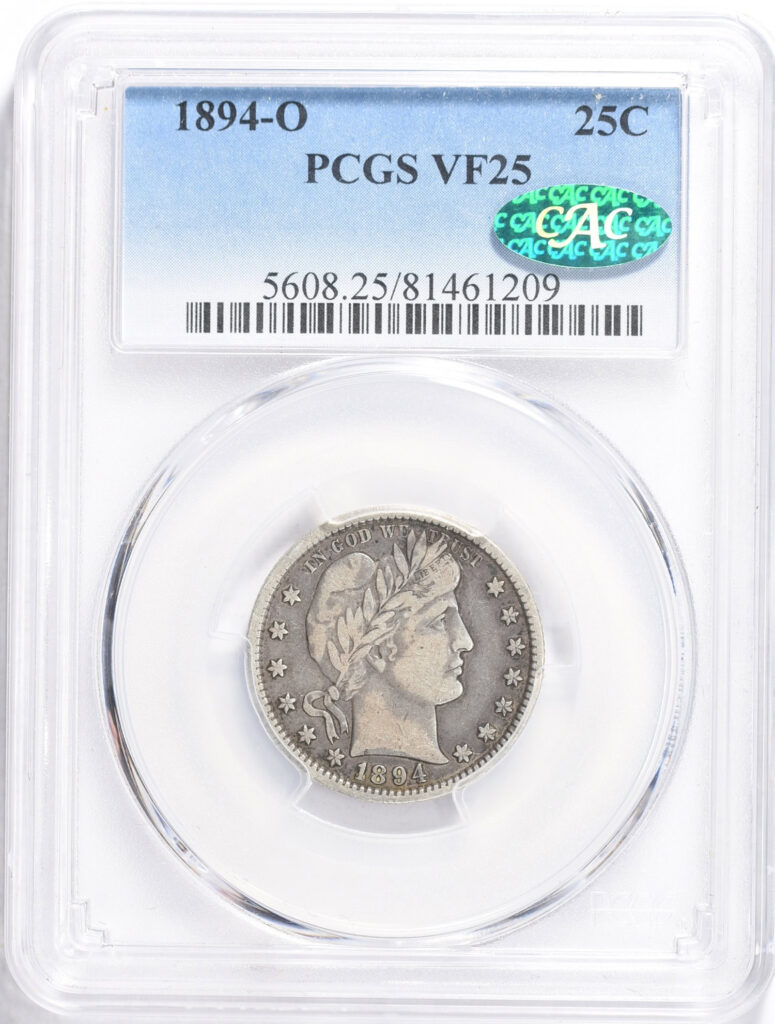
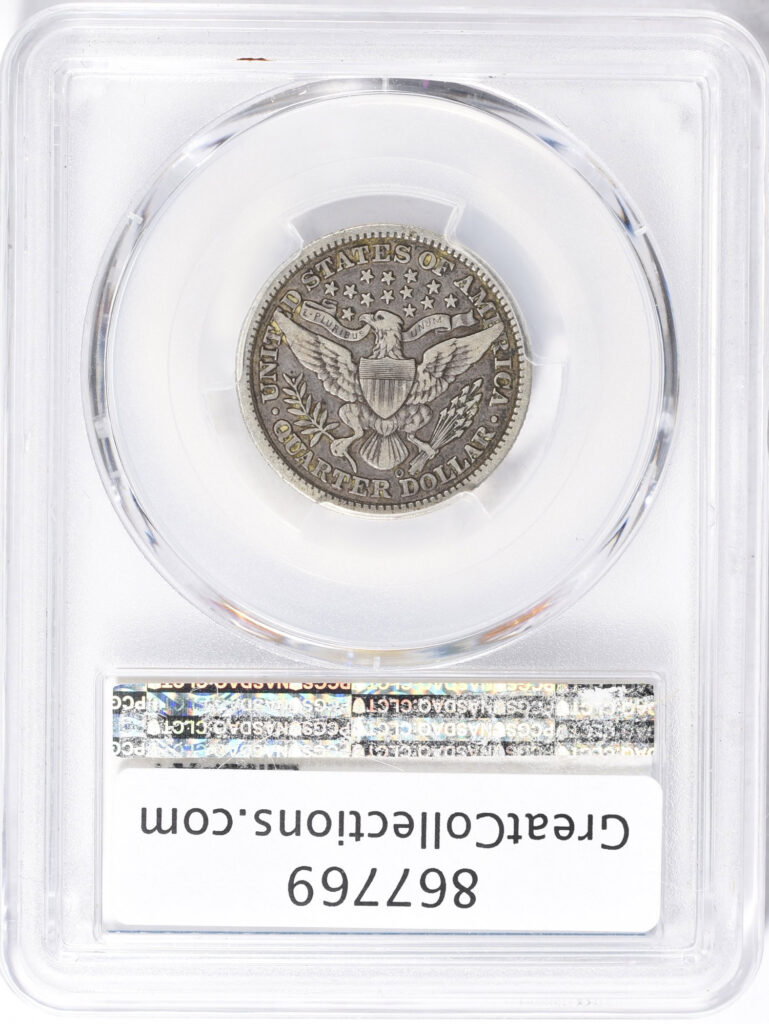
In grades above VF-20, the 1894-S commands a substantial premium over the least scarce dates, though is significantly less valuable than an equivalent 1894-O. In VF-20 to AU-50 grades, the 1895 is just a slightly better date. On Oct. 16, 2022, GreatCollections sold a CAC approved VF-25 grade 1895 for $82.50.
The 1895-O is a much better date, though it is not quite as scarce as the 1895-S in circulated grades. On Dec. 1, 2024, GreatCollections sold a CAC approved, NGC graded VF-35 1895-O for $220. On June 12, 2022, GreatCollections sold a CAC approved Fine-12 grade 1895-S for $184.09.
In VF-20 to AU-55 grades, the 1896 is one of the least scarce dates. On June 15, 2002, GreatCollections sold a CAC approved VF-30 grade 1896 for $145.23.
The 1896-O is a semi-key, though it is not extremely expensive in grades below VF-20. On June 12, 2022, GreatCollections sold a CAC approved VF-20 grade 1896-O for $402, a realization that is close to the current CPG-CAC medium retail price estimate of $390.

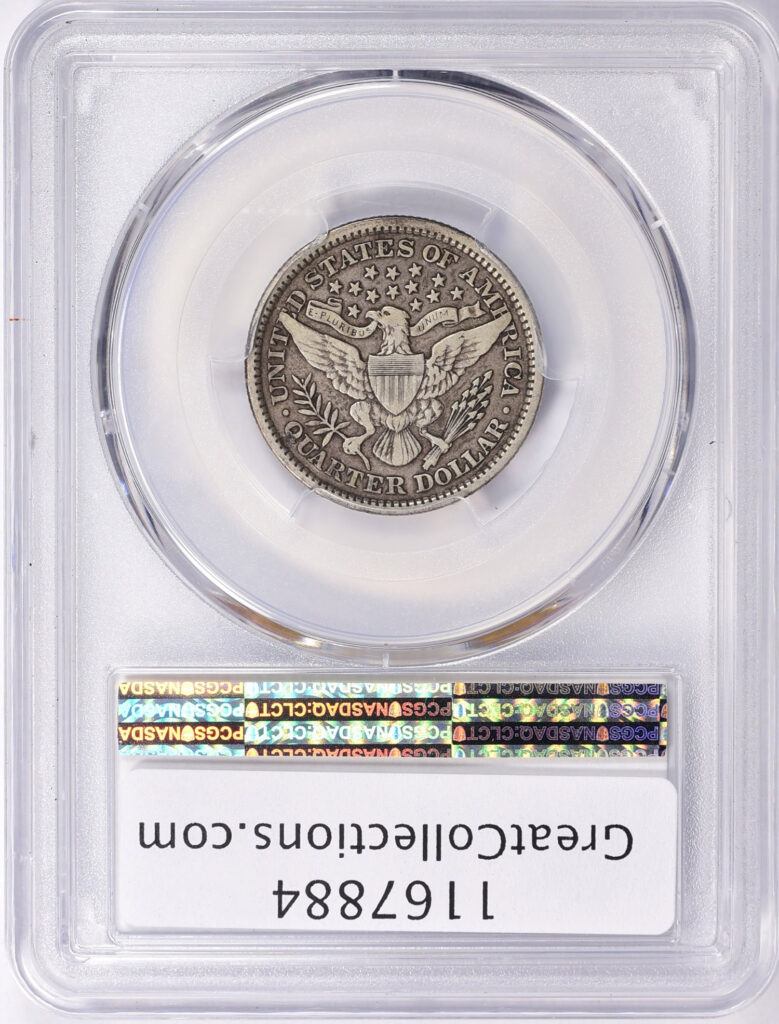
The 1896-S is one of the three keys. I repeat my suggestion that collectors should acquire most or at least several dates in a series before focusing on the keys. Collecting experience contributes to knowledge.
There really are quite a few 1896-S quarters grading below VF-25 available every year. Indeed, most auction appearances of CAC approved 1896-S quarters are for coins that grade from AG-03 to Fine-15.
On Oct. 27, 2024, GreatCollections sold a CAC approved, NGC graded Good-06 1896-S for $793.10. On July 21, 2024, this same firm sold a CAC approved, PCGS graded Good-06 1896-S for $771.10.
On Sept. 1, 2024, GreatCollections sold a CAC approved VG-08 grade 1896-S for $1320, perhaps a very good deal. On Nov. 23, 2022, GreatCollections sold a CAC approved VF-30 grade 1896-S for $4766.30. In my view, it is realistic to hope to acquire a CAC approved VF-20 to -30 grade 1896-S for less than $4750 in 2025.
Philadelphia Mint 1897 quarters are among the least scarce dates in VF-20 to XF-45 grades. For prices from $15 to $100, it should be easy to buy an 1897 quarter at a small to medium size coin show, or by mail order from dealers who specialize in relatively inexpensive, classic U.S. coins. The same is true of the 1898, the 1899 and numerous twentieth century dates in this series.
The 1897-O is a much better date and the 1897-S is even scarcer than the 1897-O in VF-20 to AU-55 grades. On April 2, 2023, GreatCollections sold a CAC approved XF-40 1897-O for $627.
The 1897-S deserves more attention than it has received, as it is a very important date in the circulated grade range. On Dec. 18, 2022, GreatCollections sold a CAC approved VF-20 grade 1897-S for $719.40. On April 2, 2023, GreatCollections sold a CAC approved VF-35 grade 1897-S for $2255.
The 1898 is one of the least scarce dates, and few dealers have sent circulated 1898 quarters to CAC. Again, as with other already mentioned least scarce dates, I suggest that some people buy non-CAC 1898 quarters that hopefully grade in the VF-20 to AU-50 range and submit them. This suggestion applies to the 1899 Philadelphia Mint issue as well. The 1898-O is a different matter.
The 1898-O is a condition rarity in uncirculated grades. Although the 1898-O is not nearly as scarce as the 1897-O in the VF-20 to AU-50 grade range, the 1898-O is scarcer than most of the other dates in the series. It might require considerable patience to obtain a CAC approved 1898-O and an 1898-S that grades from VF-20 to AU-50. It is fun to search for such coins.
The 1899-O is not nearly as scarce as the 1898-O or the 1898-S. On March 6, 2022, GreatCollections sold a CAC approved VF-30 grade 1899-O quarter for $233.75.

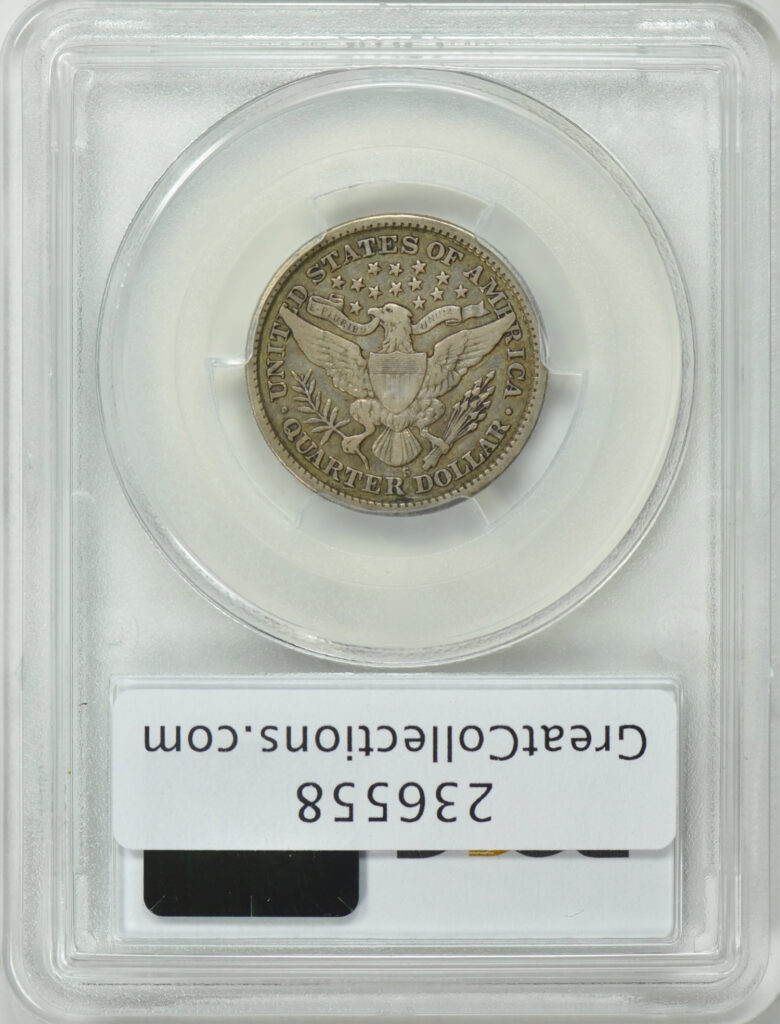
The 1899-S is much scarcer in circulated grades than the 1899-O or even the 1898-S. In VF-20 to AU-50 grades, the 1899-S is effectively a semi-key. In December 2014, GreatCollections sold a CAC approved VF-25 grade 1899-S for $201.30, which would have been a fair retail price in November or December 2024. For a CAC-only set of circulated Barber quarters, it will often not be easy to purchase semi-keys or much better dates in the VF-20 to AU-50 grade range. There may be a need to submit non-CAC coins to CAC or to seek coins that grade below VF-20 or well above AU-50. The development of a collecting strategy sometimes happens subconsciously and is largely a function of the personality of the respective collector. A CAC-only set of circulated Barber quarters is a practical objective.
Images are shown courtesy of Great Collections (Irvine, CA).
Copyright © 2024 Greg Reynolds
About the Author
Greg is a professional numismatist and researcher, having written more than 775 articles published in ten different publications relating to coins, patterns, and medals. He has won awards for analyses, interpretation of rarity, historical research, and critiques. In 2002 and again in 2023, Reynolds was the sole winner of the Numismatic Literary Guild (NLG) award for “Best All-Around Portfolio”.
Greg has carefully examined thousands of truly rare and conditionally rare classic U.S. coins, including a majority of the most famous rarities. He is also an expert in British coins. He is available for private consultations.
Email: Insightful10@gmail.com
